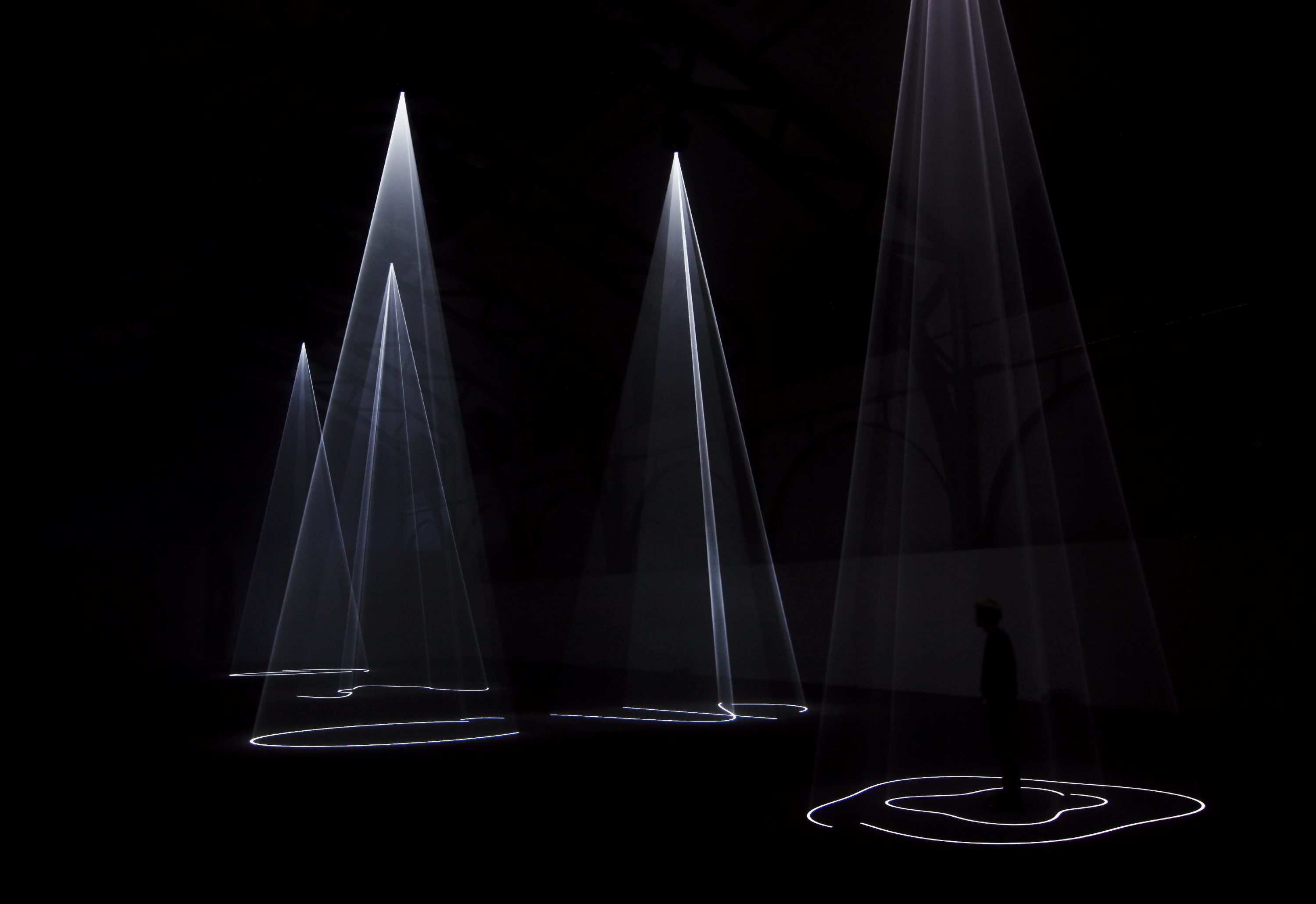Anthony McCall (born 1946 in St. Paul's Cray, England) became known in the early 1970s with his unique light installations, the Solid Light Films. The Hamburger Bahnhof is now dedicating the largest exhibition ever to his work. A selection of works from the last ten years will be presented in the museum's historic hall. Especially for this purpose, the spacious former train station with its countless windows has been transformed into a dark cinema room (black box), filled only with fog and veils of light.
McCall has developed a distinctive technique for his works: animated lines drawn in white on black are projected into a space filled with fine mist (originally smoke and dust), so that the two-dimensional drawings appear as seemingly concrete, three-dimensional shapes. The artist began the series in 1973 after moving to New York (where he has lived since) with the influential film Line Describing a Cone and further developed the concept in installations such as Long Film for Four Projectors (1974). Originally inspired by the cinematic avant-garde around the London Film-Makers' Co-op, the artist turned cinema on its head from the start, slowing it down and creating a public space that could be explored in its entirety. His works therefore exist at the boundaries of cinema, sculpture and drawing. The works are fleeting, but still seem tangible and physical. Thrown horizontally across the room onto the wall, or in the most recent works, falling from the ceiling to the floor, they envelop the viewer in unique, slowly moving cones of light.
After a break of more than twenty years, McCall returned to these works shortly after the turn of the millennium. The availability of computer animation and digital projection gave him the means to reformulate his conceptual ideas and further develop his formal language. In the following years he created a whole new series of works. Doubling Back from 2003 was his first new solid light film. Two curved lines move through each other and are vaguely reminiscent of an overturning wave. The double projection Leaving (2009) is so far the only work that uses sound: noises (ambient sound) from New York's West Side Highway and ship traffic on the Hudson River accompany two changing shapes on the wall.
